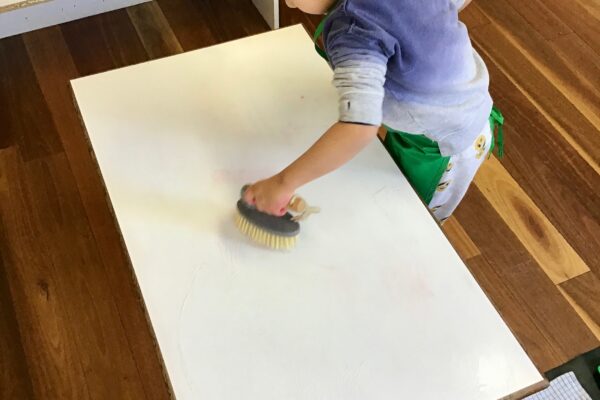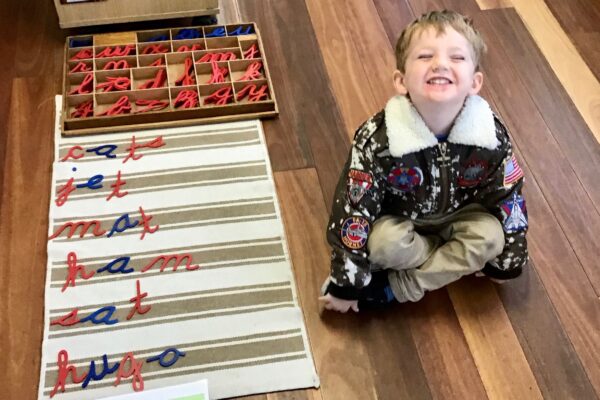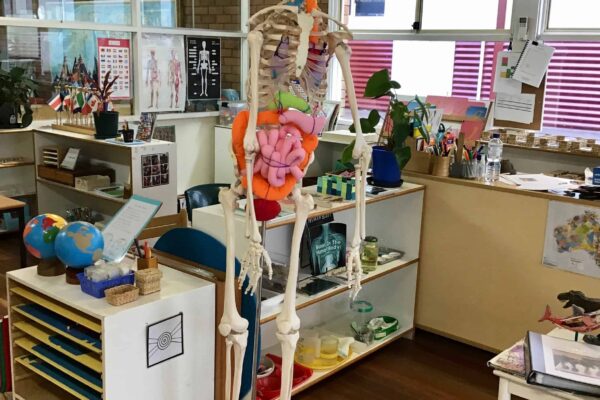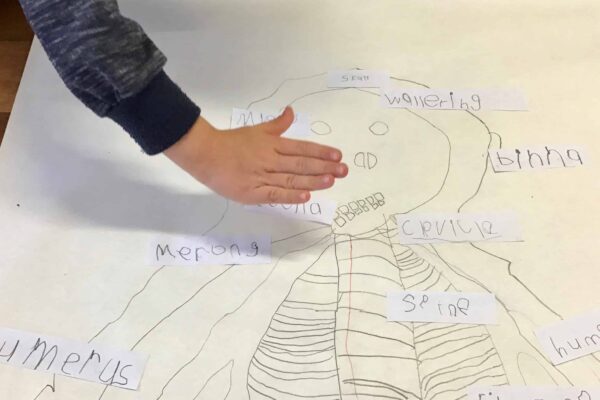The Montessori Pre-Primary 3-6 Program is designed as a three-year cycle. The knowledge the children acquire in the first two years take form and now they are challenged to extend on their learning and be open to new possibilities and concepts. The teachers and children form a bond within this three-year cycle and the teachers know what materials to provide to support each individual child. The third year (kindergarten year) allows children to consolidate their learning from the previous two years. Everything they have learnt has brought them to this moment. They keep building on what they have learnt and their developmental skills increase when they are given an opportunity to reflect on their own learning. Third year children explore work that is complex and intricate and is supported by the new and exciting materials. They showcase their skills by sharing their knowledge with the other children. Third-year children look forward to becoming role models and leaders of the room. Developing leadership skills promotes confidence within themselves and the environment and gives children the opportunity to work collaboratively and fairly with one another. This creates a sense of community, giving children the best start possible to their education.
Here are a few photos of the children in their prepared environment. Prepared environments are designed to engage the children and meet their needs and stages of development.
Practical Life:
Care of the environment such as scrubbing tables, caring for plants, cloth washing, sweeping, dusting, window washing, cleaning spills and washing dishes connects children to their surroundings. They take ownership of their environment and react independently to carry out Practical Life skills.
Sensorial:
The children are able to learn from their environment using their senses. Visual sense exercises allow children to explore materials and learn to visually discriminate colours, sizes and shapes. Tactile sense exercises give children the opportunity to learn using their sense of touch.
Mathematics:
The children are able to explore mathematical concepts with the concrete materials provided for them in their environment. Repetition of work allows children to absorb these concepts and apply them to every aspect of life.
Language:
Experiences with language in the children’s environment can affect their intellectual development. The language area provides children with the opportunity to develop their oral language, reading, writing and their receptive and expressive language skills.
Cultural:
The cultural activities focus on botany, zoology, science and geography and allows children to discover and explore human culture and life.
Science:
Science experiments empower children to plan, predict, analyse and problem solve and allows them to understand the world around them. Experiments with sink and float, magnetic/non-magnetic, soluble/insoluble ingredients, chemical reactions and using our sense of taste have been explored in the classroom.
Embedding Indigenous Perspectives:
Embedding Indigenous perspectives into the curriculum refers to an Indigenous point of view. Indigenous perspectives can be represented through cooking experiences, music, culture, art, language, mathematics and science. Symbols and images allow children to explore the diversity in Indigenous culture and understand the importance of preserving Australia’s Indigenous heritage with first hand experiences. The children’s hand prints hang on our Welcome Tree and connect the children to the classroom. “Here is the land. Here is the sky. Here are my friends, and here am I”.
Connection to the Human Body – The Organs:
The children have been learning about the human organs this semester. We decided to create an organ project to consolidate the children’s learning, engage in group activity and encourage children to share their knowledge about the human organs. We explored the digestive system and the journey our food takes in our body. The children drew and labelled the organs of the body. They discussed the location, importance and function of each organ and investigated how we can keep our body healthy.
Connection to the Human Body – Our Skeleton:
Skelly the Skeleton, the newest member of the classroom, allowed the children to observe the human body structure and internal skeletal system. The children learnt the names of the bones of the human skeleton and created a skeleton project where they labelled all the bones. The children also included the names of some of the body parts which they wrote in the local Guringai language. We used the organs from the human organ apron and tied them to Skelly the Skeleton to recreate how the organs look in our body.
Rosalie and I would like to thank the children and families for a fantastic semester. It was a privilege to observe the children explore, learn and develop into inquisitive, confident and curious learners. We look forward to guiding and supporting your children’s continuous learning journey.
Have a great holiday!
Bonnie and Rosalie









































